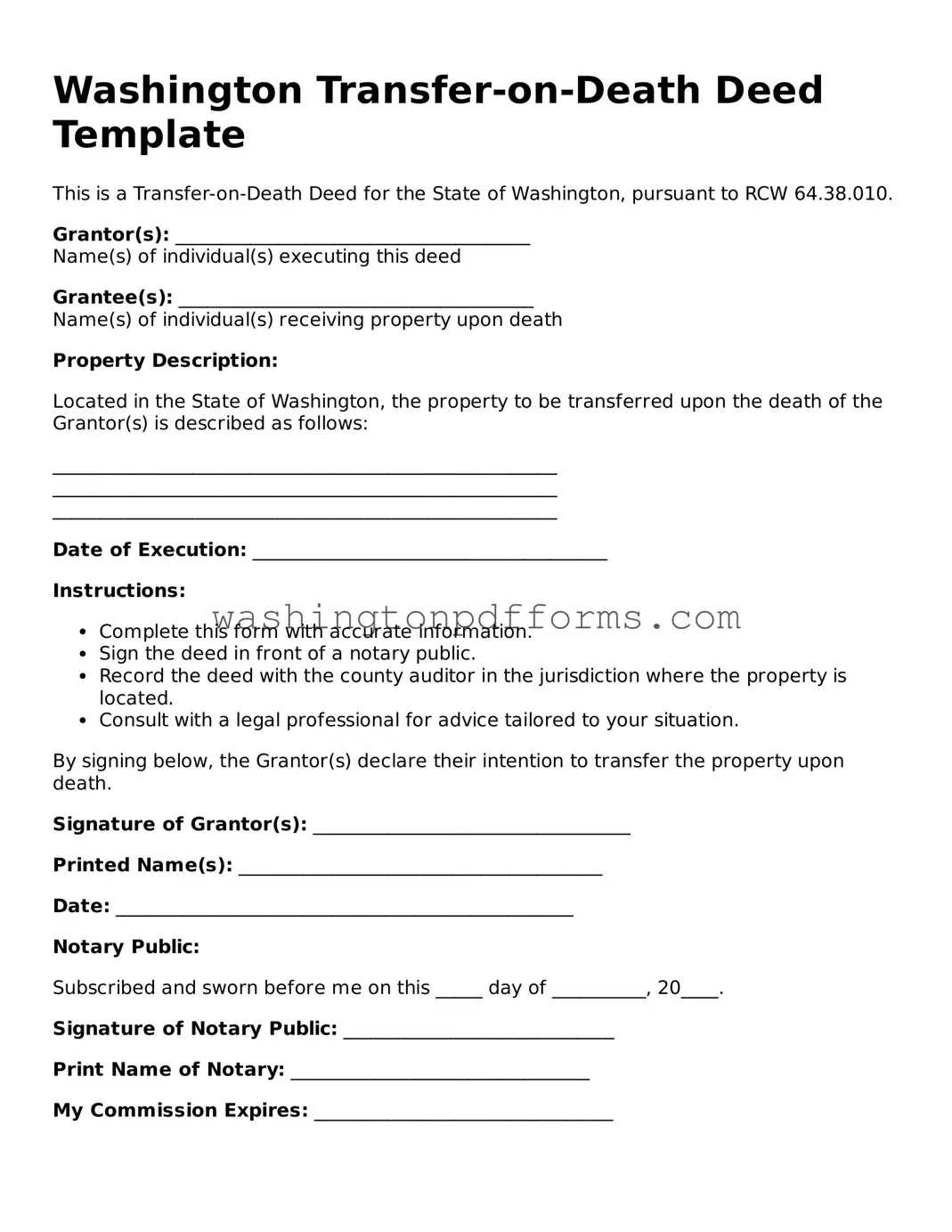Filling out a Transfer-on-Death (TOD) Deed form in Washington can seem straightforward, but many individuals make common mistakes that can lead to complications down the road. Understanding these pitfalls can save time, money, and stress. Here are nine mistakes to watch out for.
One frequent error is failing to include the correct legal description of the property. Instead of using vague terms, it’s crucial to provide the precise legal description as found in the property’s title. This ensures clarity and avoids potential disputes among heirs.
Another common mistake is neglecting to sign the deed in front of a notary. Washington law requires that the TOD Deed be notarized for it to be valid. Without this step, the document may not hold up in court, leaving your intentions unfulfilled.
Some individuals also forget to record the deed with the county auditor’s office. While filling out the form is essential, recording it is equally important. If not recorded, the deed may not be recognized, and the property could be subject to probate.
People often overlook the importance of naming a beneficiary. Leaving this section blank can lead to confusion and unintended consequences. It’s vital to clearly designate who will inherit the property upon the owner’s death.
Another mistake is not considering the implications of naming multiple beneficiaries. While it may seem like a good idea to divide the property among several people, this can lead to disagreements later. Clear communication and understanding among beneficiaries are essential to prevent conflict.
Additionally, individuals sometimes fail to update the deed after significant life changes, such as marriage, divorce, or the death of a beneficiary. Keeping the deed current is crucial to ensure that it reflects your wishes accurately.
Some may also forget to check the beneficiary’s eligibility. In Washington, certain individuals, such as minors or individuals with legal incapacity, may not be able to inherit property directly. It’s important to consider these factors when designating beneficiaries.
Another common oversight is using a TOD Deed for property types that are not eligible. For instance, some types of property, like certain types of personal property or assets held in trust, cannot be transferred via a TOD Deed. Understanding what can and cannot be included is vital.
Finally, many people fail to consult with a legal professional when filling out the form. While it might seem like an unnecessary step, getting expert advice can help navigate the complexities and ensure that all aspects of the deed are properly addressed.
